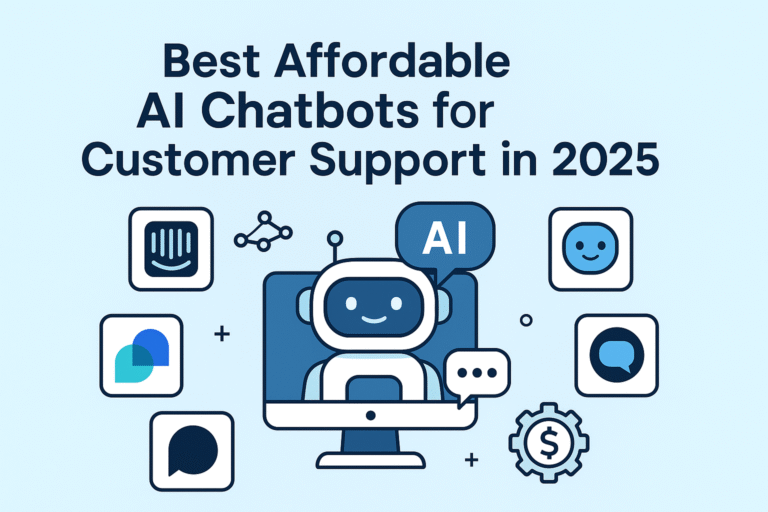The software development world is changing rapidly, and 2025 promises to be a breakthrough year. With innovations in artificial intelligence (AI), machine learning (ML), blockchain, cloud computing, and more, software is reshaping industries. These advancements are transforming how businesses operate and interact with customers. Let’s explore the revolutionary software technologies to watch in 2025 and how they can impact your business.
1. Artificial Intelligence (AI) and Machine Learning (ML)
- Key Features: AI and ML are central to software evolution, enabling automation, data analysis, and intelligent decision-making. Machine learning allows software to learn from data and improve over time.
- Pros: Increases efficiency, enhances customer experiences, drives innovation in product development.
- Cons: Requires large data sets and high computing power; implementation can be costly.
- Pricing: Varies based on the service or platform used. Open-source solutions (e.g., TensorFlow) can be free.
- Source/Reference: OpenAI, Google Research
AI and ML are transforming how businesses operate by automating processes and providing insights that improve decision-making. These technologies will continue to evolve in 2025 and beyond.
2. Blockchain Technology
- Key Features: Blockchain offers secure, decentralized data storage and transaction management. It ensures transparency, security, and efficiency in various industries, including finance, healthcare, and logistics.
- Pros: Enhanced security, improved transparency, reduces fraud, and speeds up transactions.
- Cons: High energy consumption for certain blockchain systems (e.g., Bitcoin); regulatory concerns in certain regions.
- Pricing: Free to use with open-source platforms (e.g., Ethereum); fees depend on network activity.
- Source/Reference: IBM Blockchain
Blockchain isn’t just for cryptocurrency anymore. It’s being applied to revolutionize industries by providing more secure and transparent ways to store and share data.
3. Cloud Computing
- Key Features: Cloud computing enables businesses to access software and storage over the internet, eliminating the need for costly infrastructure. It also provides scalable, on-demand computing power.
- Pros: Flexible, cost-effective, and facilitates remote work and collaboration.
- Cons: Dependent on internet connectivity, potential security vulnerabilities.
- Pricing: Pay-as-you-go pricing models are common. Top services include AWS, Google Cloud, and Microsoft Azure.
- Source/Reference: Amazon Web Services
Cloud computing is a game-changer for businesses, offering cost-effective solutions for storage, processing, and collaboration without the need for heavy infrastructure investment.
4. 5G Technology
- Key Features: The rollout of 5G networks promises ultra-fast internet speeds, lower latency, and more reliable connections, driving advancements in the IoT (Internet of Things), autonomous vehicles, and remote services.
- Pros: Faster speeds, lower latency, and enables innovations in connected devices.
- Cons: Infrastructure is still being developed; full coverage may take years.
- Pricing: Prices vary depending on the mobile provider (e.g., Verizon, AT&T).
- Source/Reference: Qualcomm 5G
5G will enable new opportunities in the software space, such as faster data transfer and better performance for AI-powered applications and IoT devices.
5. Quantum Computing
- Key Features: Quantum computing uses quantum bits (qubits) to process information at speeds far beyond traditional computers. It’s particularly useful for solving complex problems in fields like cryptography and optimization.
- Pros: Incredibly fast processing speeds, ability to solve previously unsolvable problems.
- Cons: Still in early development; requires specialized hardware.
- Pricing: Expensive; currently limited to research institutions and large enterprises.
- Source/Reference: IBM Quantum
Although still in its infancy, quantum computing holds the promise of transforming industries by solving problems that traditional computers cannot tackle.
6. Edge Computing
- Key Features: Edge computing involves processing data closer to its source (at the “edge” of the network), reducing latency and bandwidth use, making it ideal for real-time applications.
- Pros: Reduces latency, enhances real-time decision-making.
- Cons: Requires more localized infrastructure and maintenance.
- Pricing: Costs vary depending on the deployment scale.
- Source/Reference: Microsoft Azure Edge
Edge computing is essential for applications that require immediate processing, such as autonomous vehicles, smart cities, and real-time data analytics.
7. Robotic Process Automation (RPA)
- Key Features: RPA uses bots to automate repetitive, rule-based tasks, improving operational efficiency and reducing human error.
- Pros: Increased productivity, accuracy, and cost savings.
- Cons: Limited to repetitive tasks; may face resistance from employees.
- Pricing: Subscription models (e.g., UiPath).
- Source/Reference: UiPath RPA
RPA is revolutionizing how businesses approach automation by reducing the need for manual intervention in mundane tasks.
8. Augmented Reality (AR) and Virtual Reality (VR)
- Key Features: AR and VR provide immersive experiences that blend the physical and digital worlds, with applications in training, retail, and gaming.
- Pros: Enhanced user engagement, improved training methods, and innovative marketing strategies.
- Cons: Can be expensive and requires specialized hardware.
- Pricing: Varies based on software and hardware used.
- Source/Reference: Microsoft HoloLens
AR and VR technologies are transforming industries by providing new ways to engage customers and employees, from virtual product demos to realistic training simulations.
9. Cybersecurity Software
- Key Features: Cybersecurity tools protect businesses and users from cyber threats, ensuring safe operations and secure data storage.
- Pros: Enhanced protection against data breaches, malware, and hacking attempts.
- Cons: Can be expensive for large enterprises; requires ongoing updates.
- Pricing: Subscription-based models for services like Norton, McAfee.
- Source/Reference: Symantec Cybersecurity
As digital threats continue to evolve, businesses need robust cybersecurity software to safeguard their assets and ensure compliance.
10. DevOps Tools and Automation
- Key Features: DevOps tools streamline the software development process, enabling continuous integration and delivery (CI/CD), automated testing, and improved collaboration between development and operations teams.
- Pros: Accelerates development, increases product quality, enhances team collaboration.
- Cons: Requires significant investment in training and infrastructure.
- Pricing: Subscription-based models (e.g., Jenkins, GitLab).
- Source/Reference: Jenkins CI/CD
DevOps practices and automation are critical to speeding up the software development lifecycle and improving collaboration among teams.
Conclusion
2025 will be a year of tremendous innovation in the software space, with technologies like AI, blockchain, and cloud computing continuing to evolve and impact industries. By staying ahead of the curve and adopting these emerging technologies, businesses can unlock new opportunities, improve efficiency, and drive growth. Keep an eye on these revolutionary trends and get ready for a tech-driven future!








